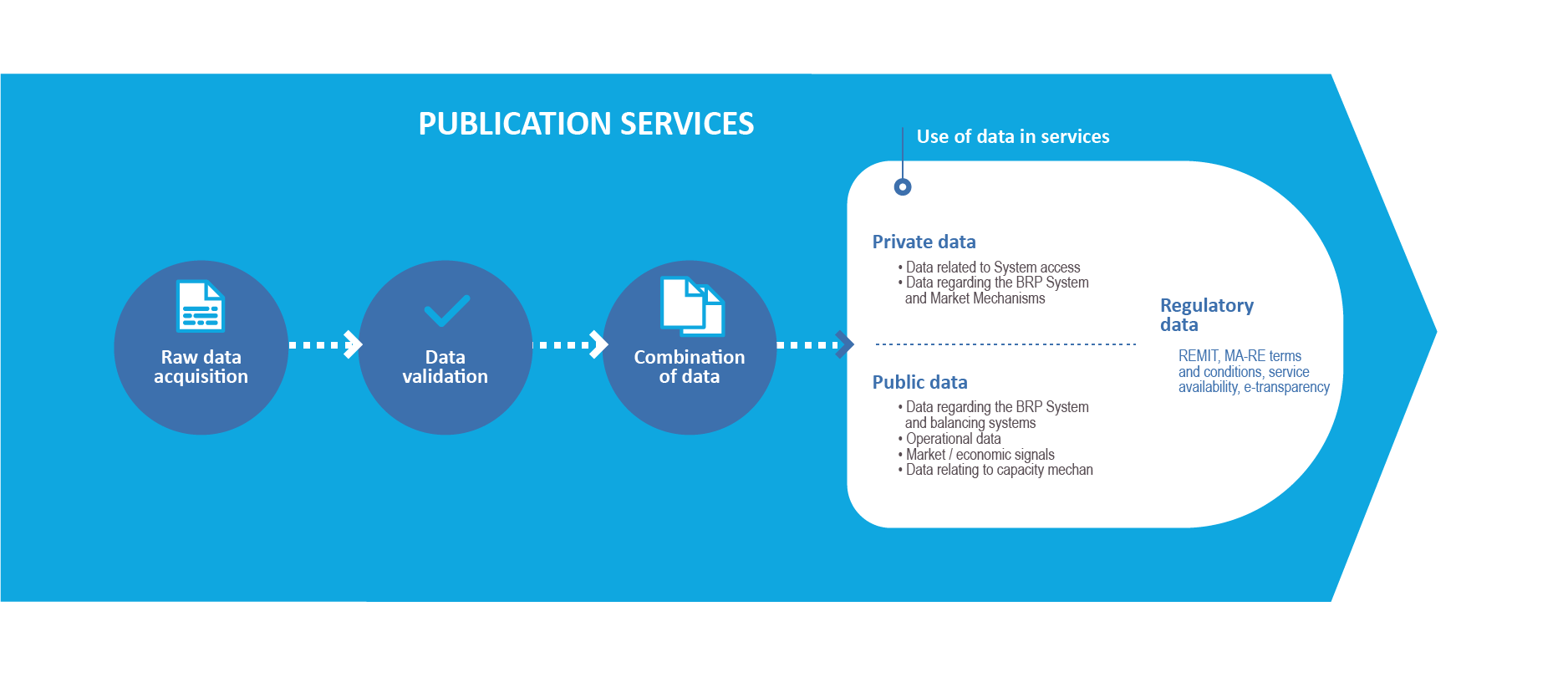Do you have an account?
Why create an account?
After creating an account you will :
- have access to the “favourites” feature,
- be able to download certain data published by RTE,
- have access to forms (PKI certificate, EIC code, Customer questionnaire - KYC),
- have access to notifications.
If you are an RTE customer, feel free to contact your administrator so that he or she can give you access to your company’s services.
+ RTE provides many public and private data services to enable its customers to manage their activities on the electricity transmission system. From the meter to the data catalogue, beginners or experts, we invite you to discover the RTE data offer.
Beneficiaries
- Generators
- Distributors
- Consumers
- Market participants
The life cycle of metering data
RTE allows anyone to access public data and allows its customers or third parties mandated by its customers to consult or retrieve private data.
The data returned from each meter (raw data) is collected and archived by RTE. Once validated, they are used to produce new data. The data from these calculations are used in RTE’s data services.

Raw data acquisition
Customers connected to the Transmission System hold a Transmission System Access Contract (CART) to which a diagram is attached of the customer site and a nomenclature of metering installations (usually Annex 1 of the CART). This annex describes the positioning and characteristics of the installations required to acquire the data used in the contract.
Depending on its complexity, each customer site has one or more metering installations. Each installation meets the requirements described in the Technical Reference Documentation (Chapter 4 – User contribution to the performance of the PTS – Article 4.8 – metering). To ensure reliable measurements, all installations are equipped with a main meter and a backup meter.
Each of them delivers 4 types of data every minute:
- Extracted active energy expressed as mean power over the period (kW)
- Injected active energy in mean power over the period (kW)
- Extracted reactive energy expressed as mean power over the period (kVAr)
- Injected reactive energy expressed as mean power over the period (kVAr)
Some older installations (about 10%), deliver the data every 10 minutes and the collection takes place once a day. They are being gradually replaced by RTE.
These data called "raw data" are collected by RTE every 5 minutes and are securely archived for 5 years. They do not undergo any balancing or replacement actions and remain accessible at all times.
The measurement interval of the metering installations is 1 minute but RTE also offers access to the data at 10-minute intervals.
Validation of data
The "raw data" are subject to a process to detect and deal with failures in metering installations or a lack of measurements. This process, known as “data validation” and described in the Transmission System Access Contract (CART), is based on quality controls and alert triggers.
In over 99.5% of cases, raw data are automatically validated on D+1 at 8:00 but situations that require it are examined by RTE’s teams. If necessary, the raw data is analysed, corrected and, where required, replaced. In this case, the most recent data overwrites the previous one in the display, but each version of the data remains archived and indexed. Finally, if the metering installations are too distant from the connection point, RTE makes corrections to take account of the losses on the customer's internal network and to bring the value of the measurements back to the connection point.
Once validated, the data can be used in the combination process that feeds the data catalogue, the billing of RTE services or the certification of market transactions. If a failure is detected late, the data can be regulated up to 5 years back, but this for exceptional cases only (less than 0.01% of the data).
Combination of data
For use in the billing and certification processes of market transactions, the validated data will integrate different calculation formulas or combine to produce new data. The data from these calculations are used in RTE’s services. Each service has a calculation formula also called a "linear combination". All calculation formulas are attached to the contracts linking RTE to its customers.
The following two examples of "combined data" services are the most commonly used but RTE offers a large data catalogue (see "using data in services" page):
The "Network data" are presented in 2 load tables representing net active energy flows and net reactive energy flows for a connection point or connection point grouping. This data is used in the invoicing of access to the transmission system. To obtain these, the measures following the validation process are combined with each other using calculation formulas appended to the transmission system access contracts.
Formula example:
Net Active Energy = ∑ Active energy extracted by the site - ∑ Active energy injected by the site
Net reactive energy = ∑ Reactive Energy from the site - ∑ Reactive Energy injected by the site
The "physical data" are presented in 2 load tables representing extracted active energy flows and injected active energy flows for a given site. They represent the contribution of the site to the balance responsible party system responsible for a given perimeter. To obtain these, the measures following the validation process are combined with each other using calculation formulas appended to the transmission system access contracts.
Formula example:
Active energy extracted = ∑ active energy taken from the site
Active energy injected = ∑ active energy generated by the site
Reference documentation
Contact
For any requests for information, please contact your account manager or the generic email address of your customer service.
